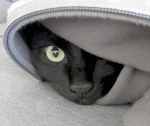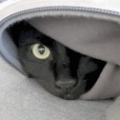cathalferris
Now also known as EI4IWB, passed the IRTS/Comreg HAREC exam, and now fully licensed as a Radio Amateur.
About
- Username
- cathalferris
- Joined
- Visits
- 111
- Last Active
- Roles
- Member
- Points
- 3
-
Understanding the KiwiSDR
Openwebrx is the software that does the decoding of the radio signal input to show on screen or to pipe to other programs. The original author maintained a semi-public directory of stations that used the software, but he has since stopped working on that project due to PhD committments.
The KiwiSDR interface is based on an earlier fork of the openwebrx codebase, but hasn't followed the changes there in some time - mostly as a lot of the changes were not that relevant to the Kiwi setup and processing capabilities.
Note that there is a fork of the openwebrx code that is being currently maintained at https://github.com/jketterl/openwebrx and this fork is very likely to be considered as the main fork of the openwebsdr project as this is where the majority of the ongoing development is taking place.
The status of the openwebrx project is not really of any relevance to the KiwiSDR project, but if anyone is a competent coder and has the time to spare, then the retrofitting of the current-fork code updates from jketterl's tree and submitting to John's codebase at https://github.com/jks-prv/Beagle_SDR_GPS would be a really nice thing to do (but chat with John first just to make sure effort is not wasted).
As for how the Kiwi works, I'm not sure what level of detail you're looking for. Each Kiwi device is self-contained, but the owners can choose to add their device(s) to the http://rx.kiwisdr.com registry for public access. This registry was recently created to duplicate the functionality that the openwebsdr's creator had in place before his removal of that service. -
wsprdaemon - A Raspberry Pi WSPR decoding service
@WA2ZKD My kiwis are aready being listed on your pages.
SWLIO52RP in Limerick, Ireland, MFA-30 cheapie amplified antenna as a 4m horizontal dipole literally on the lawn in the garden, gets ~15% of world's wspr transmissions, top 50 is positions.
SWLJN47FJ in Zurich, Switzerland. AAA-1c amplified antenna, two pairs of 1m pipe loops, in the attic of an apartment building (loads of noise), get ~11% of wspr transmissions, top 100 positions.
The Zurich one may have to go offline in a month, depending on the job market results.



